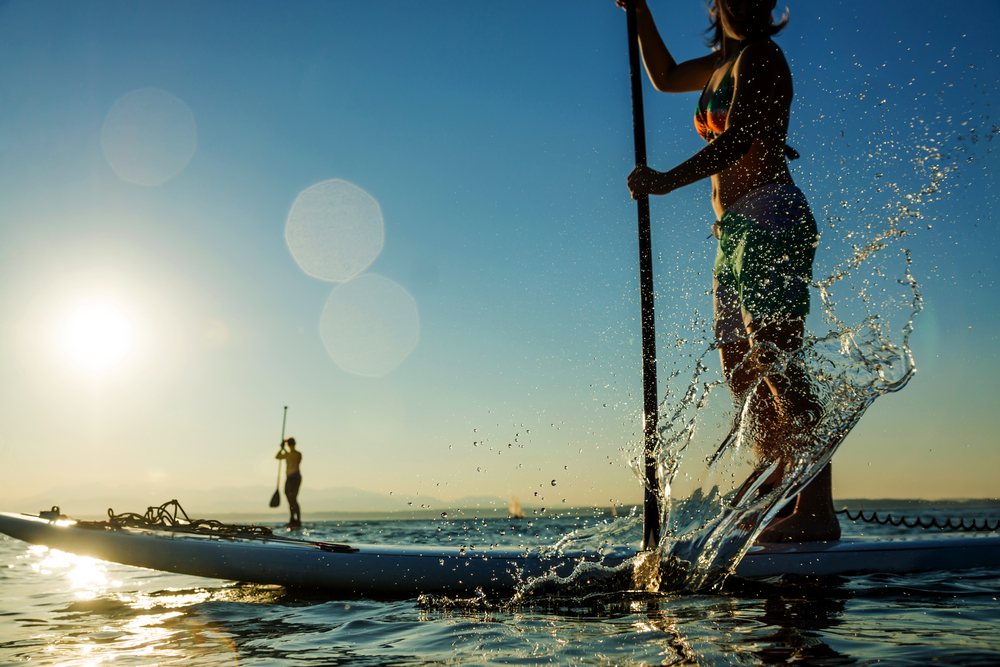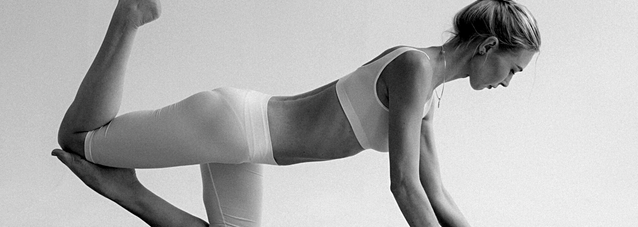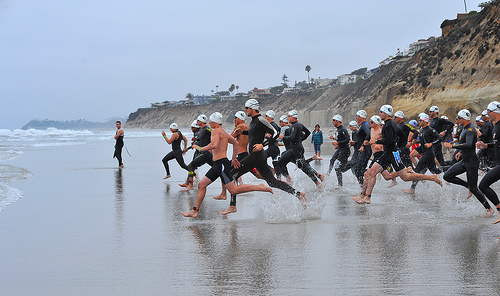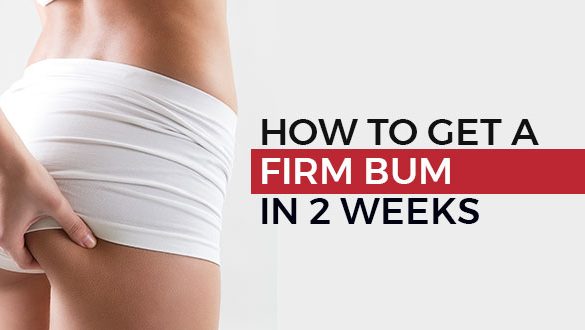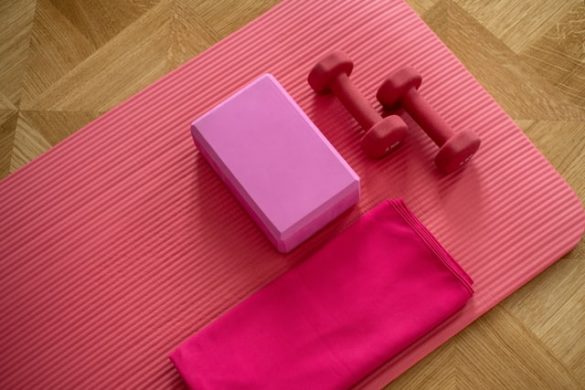What could be better than spending a glorious sunny morning out on the open water after a hectic week at work? What could be better than exercising while having loads of fun? Stand up paddling, also known as Paddleboarding, can do all this and more.
Stand up paddling is rapidly becoming one of the most popular water sports, and the best thing about it is that it’s great for your fitness and overall health. All you need is an according board, a paddle, and a large body of water.
This article will examine why SUP improves your fitness and general well-being and what physical and mental results you can expect as you do stand up paddling for your health and enjoyment. So without further ado, let’s jump into it and take a look.
Best Low-Impact Workout
The low impact nature of SUP makes it an ideal sport for people of all ages, fitness levels, and even those with injuries. Balancing on the board as it moves smoothly over the water works your core muscles and helps tone your stomach and buttocks. Not bad! And this is just the beginning.
The action of using the paddle works your shoulders, arms, and legs simultaneously while causing no stress on your joints, ligaments, or tendons. In fact, the balancing that is needed helps strengthen joints and causes no stress to existing injuries.
All this activity keeps your heart rate up and strengthens your breathing. In other words, it is a great cardio workout too. Improving cardiovascular health can lower the risk of heart disease and reduce the chance of high blood pressure and high cholesterol.
Important nowadays: SUP helps to strengthen your back muscles
One of the great benefits of Stand up paddling is the way it eases back pain and strengthens lower back muscles. The constant need for the body to stabilize on the paddle board requires all the muscles to work together. This movement works especially the deep core muscles, the very ones that cause back pain.
The movement is gentle and exerts little pressure on the lower back. Back pain symptoms caused by weak back muscles, which is often the reason for back pain, is eased as the muscles are strengthened through regular paddling. The knock-on effect is that more exercise can be enjoyed, leading to a fitter and happier individual.
SUP has also been known to relieve sciatica. The normal methods for treating the symptoms of sciatica are physiotherapy and exercise. SUP provides a low-impact way to relieve symptoms and reduce pain. It should be noted that any exercise relating to sciatica should be done in consultation with a doctor.
Promotes Weight Loss
The constant movement involved in maintaining balance on the board burns fat and tones muscles. The average adult burns about 200 calories an hour just by standing up on a paddle board, while slowly paddling can consume between 300 and 400 calories an hour in shallow and tranquil waters.
Obviously, calorie consumption increases depending on the intensity of the paddling.
Interestingly, SUP does not only involve standing or kneeling on a paddle board! There are a few different types of SUP, and they are all calorie-burning activities well suited if you plan to loose some weight or work on your overall fitness.
- SUP Yoga. The rocking motion of the board involves other muscles that wouldn’t normally be involved in land-based yoga. It is estimated that 400 – 540 calories are burned in an hour as opposed to 300 calories burned on land yoga.
- Surf SUP is a combination of surfing and paddling. More coordination, balance, and strength are needed, which increases calorie consumption.
- Race SUP is for more experienced paddlers. As it is in a race, the paddler must maintain speed, making the workout more intense, resulting in about 700 – 1125 calories being consumed.
- SUP touring involves paddling for long distances, so there is naturally high-calorie consumption.
Boosts General Health
As you paddle about in the sunshine, you are sometimes oblivious to the general health benefits of being out in the fresh air.
When exposed to sunlight, your body makes vitamin D. This amazing vitamin helps the body absorb and retain calcium and phosphorus, two minerals that are vital for maintaining strong bones. Vitamin D also puts you in a good mood, which is a good reason to expose yourself to sunlight daily!
We are all aware of the dangers of overexposure to the sun, so always wear at least a rash guard and sunscreen to prevent burning while in the water.

Improves Mental Health
Besides providing a whole-body workout, stand up paddling is great for your mental health. Being out in the fresh air and sun is a natural form of stress relief. Exposure to the sun releases serotonin, a hormone that boosts your mood and is known as your body’s “happy drug”. Furthermore, the soothing sounds of the water lapping against the side of the board is sure to wash away feelings of anxiety and stress.
It is difficult to remain sad even while paddling on a cloudy day. Studies have shown that the body releases chemicals during exercise that help reduce anxiety and stress. So, pick up your board and head for the water regardless of the weather. It won’t be long before you feel relaxed and full of the joys of spring.
Conclusion
There you have it. Besides being a great way to spend your free time, stand up paddling has definite health benefits, too. As a low-impact full-body workout, it is a form of exercise that anybody of any age and ability can do, all at differing levels and intensity, and get great results. It is an effective mood lifter and reliever of stress. And the best part is that you get all these upsides while having fun and enjoying time on the water.
What further motivation do you need to hop on a paddle board and get paddling? So grab your paddle board (or rent one if you need to) and head out on the water. You definitely won’t regret it!
If you need any detailed information about Stand Up Paddling in general, its gear or technique, have a look at Stand Up Paddle – Cool Water Sports. There you’ll find a lot of high quality information about this cool and fascinating sport.
